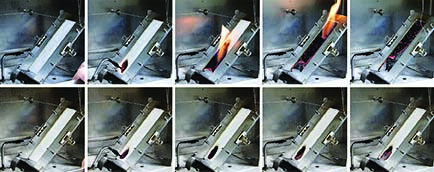
Researchers at the U.S. Department of Agriculture’s (USDA) Agricultural Research Service (ARS) have bred four cotton lines that can be used to make self-extinguishing fabrics. This could reduce the need for flame-retardant chemicals to be embedded in consumer products such as mattresses, clothing and upholstery and could also present positive ripple effects for the environment.
The cotton lines were developed from cultivated cotton varieties as researchers were working with those that possessed a novel flame-retardant trait. When exposed to an open flame, the resulting nonwoven fabric from the new cotton lines self-extinguished, whereas regular cotton fabric burned entirely, in seconds.
“Use of these lines to develop commercial cultivars creates an opportunity to improve the safety of cotton products while reducing the economic and environmental impacts of chemical flame retardants,” says Brian Condon, senior author of the study and retired research leader at the ARS Cotton Chemistry and Utilization Research Unit in New Orleans, La. “These lines will significantly benefit growers, producers and consumers.”

Although all of the parental cotton lines produced flammable fabric, researchers found that flame retardance did not come from a single gene. Instead, multiple genes created a phenotype for fibers with significantly lower heat-release capacities.
“Further research is required to fully understand the mechanism of the natural flame retardance,” the study concluded.
“We look at fabric quality and chemical finishes that create permanent press, wrinkle-free and flame-retardant fabrics,” Condon says. “Now we have found lines with a novel and natural genetic mechanism for flame retardance.”
The research was published in January on the PLOS One website.
 TEXTILES.ORG
TEXTILES.ORG


